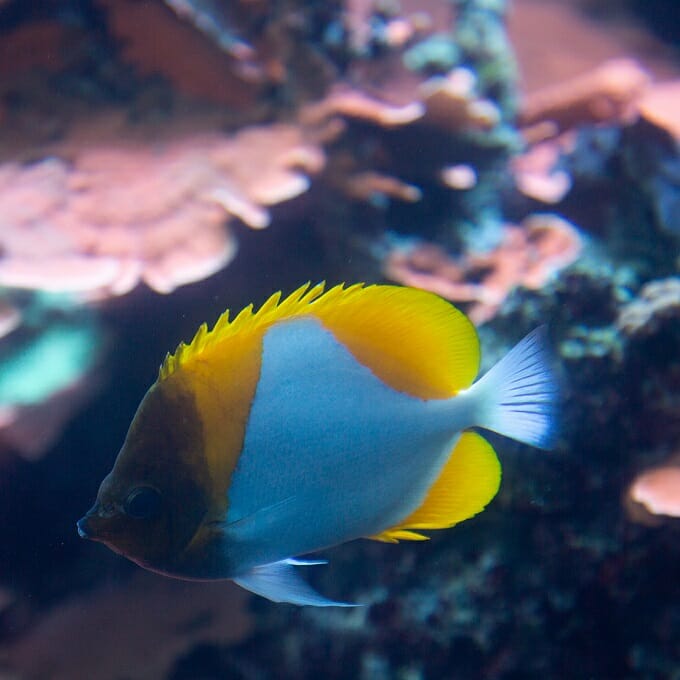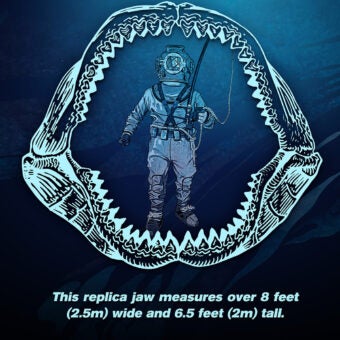-
Size
7 inches (18 cm) -
Diet
Zooplankton -
Range
Indo-Pacific -
Habitat
Outer reef slopes
Physical Characteristics
- The pyramid butterflyfish is readily identifiable by its distinctive coloration.
- The head is brown and black and the dorsal and anal fins are orange-yellow. The yellow color on the dorsal fin extends downward behind the head and on the posterior body toward the causal peduncle. The majority of the side of this fish is white, as are the caudal peduncle, caudal fin and pectoral fin.
- This species draws its name from the large white triangle on the side that is formed by the yellow area above the caudal peduncle and the triangular patch behind the head.
- Pyramid butterflyfish grows to 7 inches (18 cm) in length.
Animal Fact
Th pyramid butterflyfish is common throughout its range, forming large aggregations over steep, current-swept outer reef slopes.
Diet / Feeding
- This species feeds high in the water column on zooplankton.
Range / Habitat
- Occurs in the Indo-West Pacific to Hawaii and Pitcairn Islands, Japan, and New Caledonia.
- Commonly found on the outer reef slopes at depths of about 10-200 feet (3-61 m).
Reproduction & Growth
- Butterflyfish as a group have an elaborate courtship ritual. The female and one or more males rapidly swim in tight circles and move up near the ocean surface to release their eggs and sperm into the water. Fertilized eggs hatch in the sea in about 24 hours and the larvae drift as plankton for 3-8 weeks, depending on the species. The young fish then seek shelter on shallow reefs, where the juveniles develop into adults.
Conservation Status
- “Least Concern” on the IUCN Red List.
Additional Information
- Pyramid butterflyfish are common throughout their range, forming large aggregations over steep, current-swept outer reef slopes.
- Also known as the shy butterflyfish.
- This species forms pairs during spawning.
Sources
- Reef Fish Identification – Tropical Pacific. Allen, G.; Steene, R.; Humann, P. and Deloach, N., pg. 30
- www.fishbase.org
- www.iucnredlist.org





